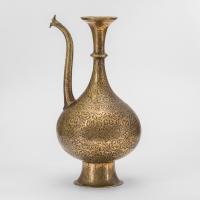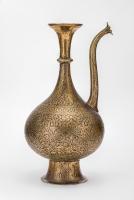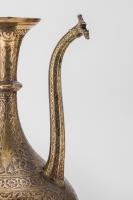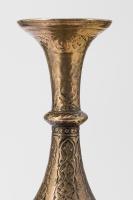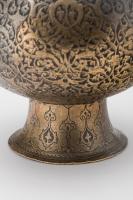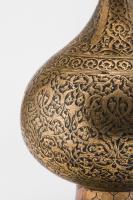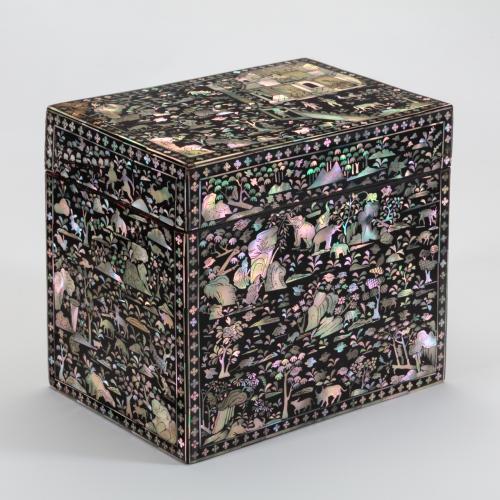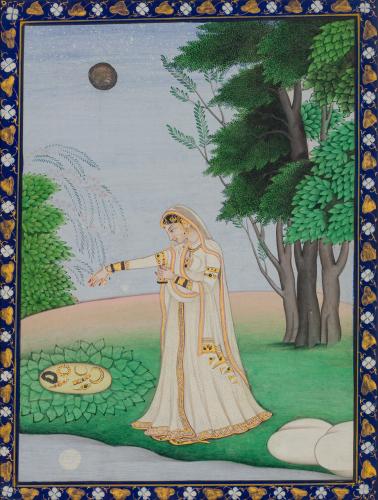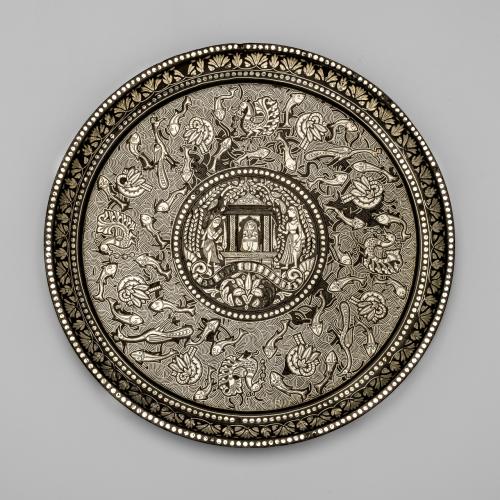
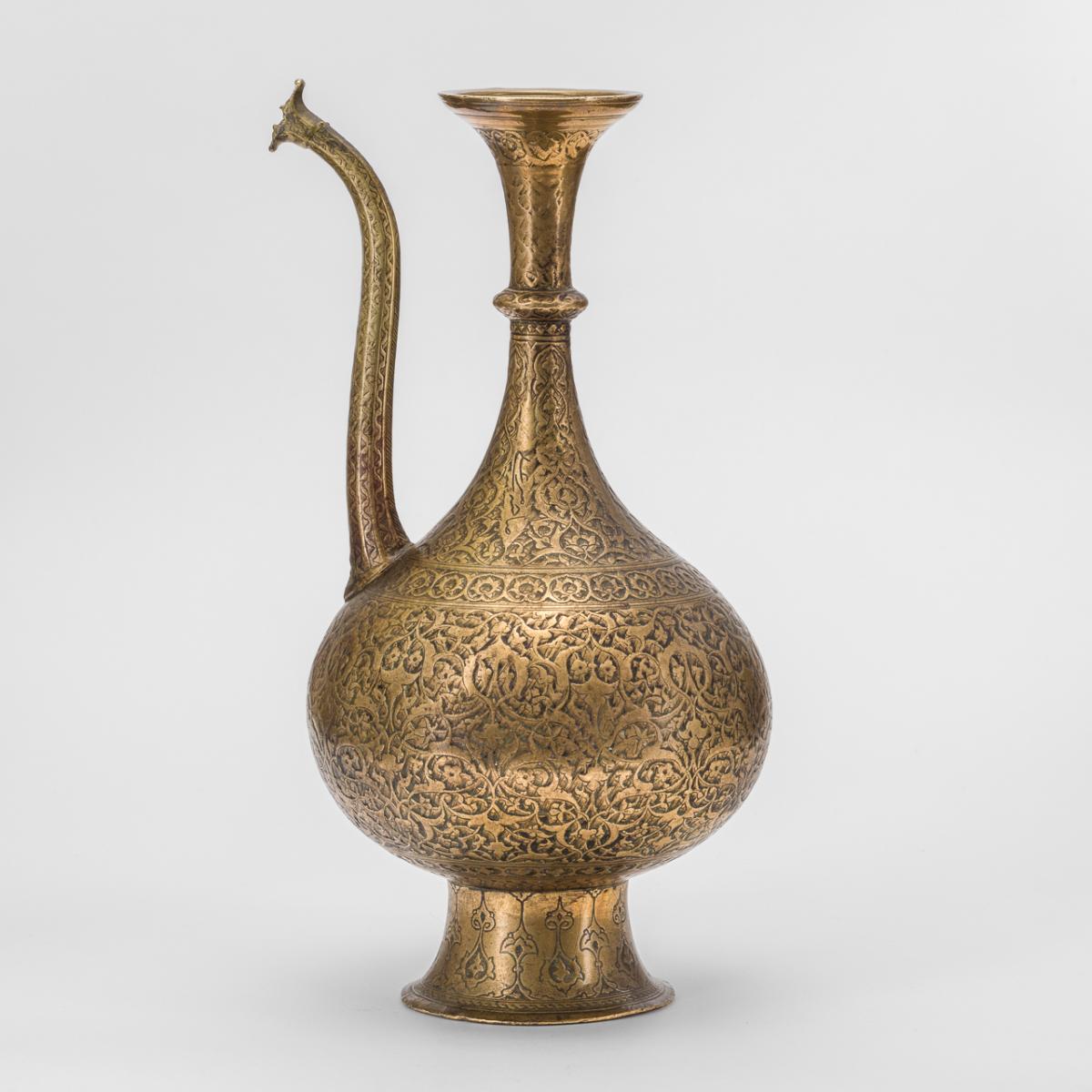
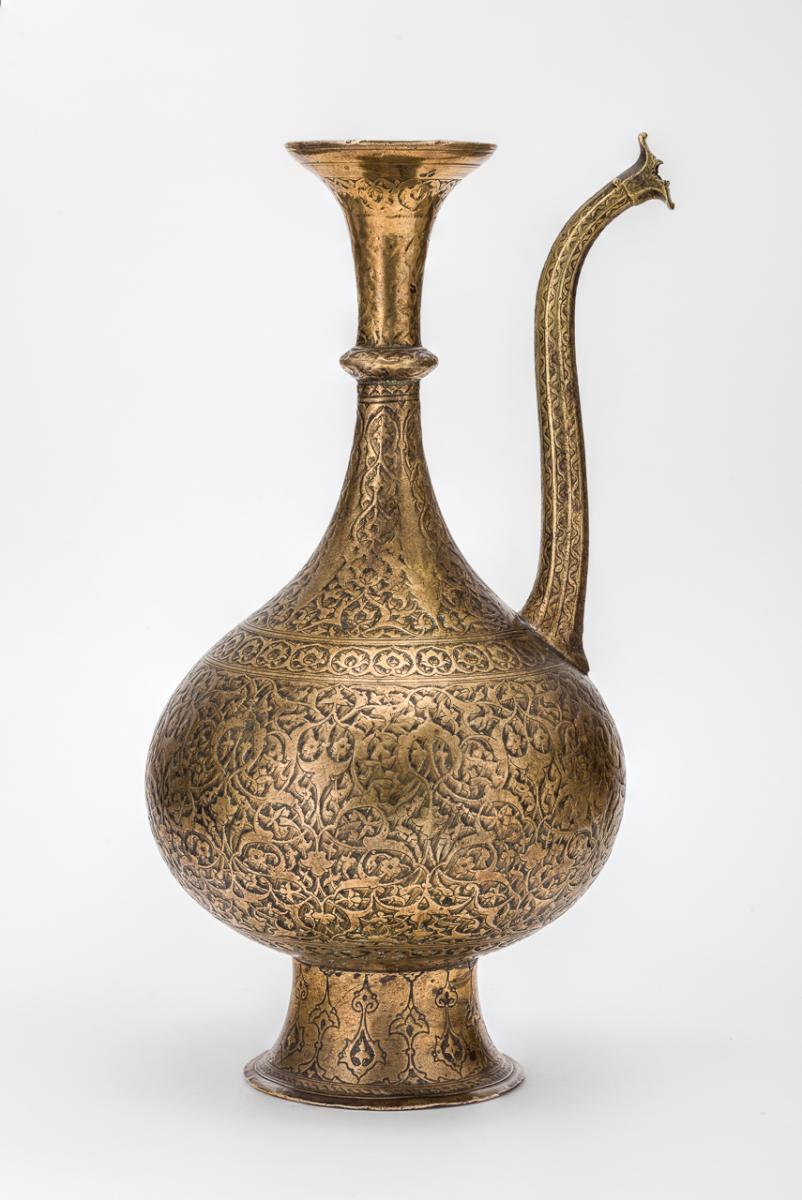
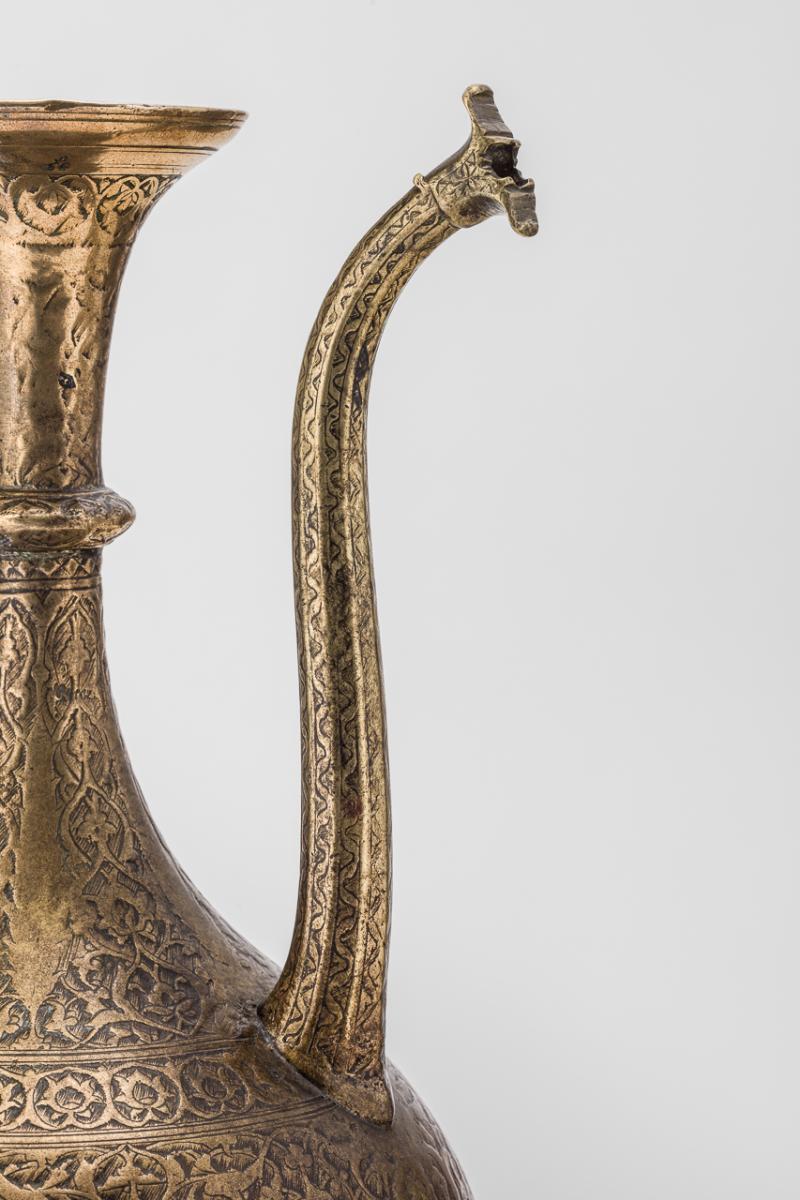
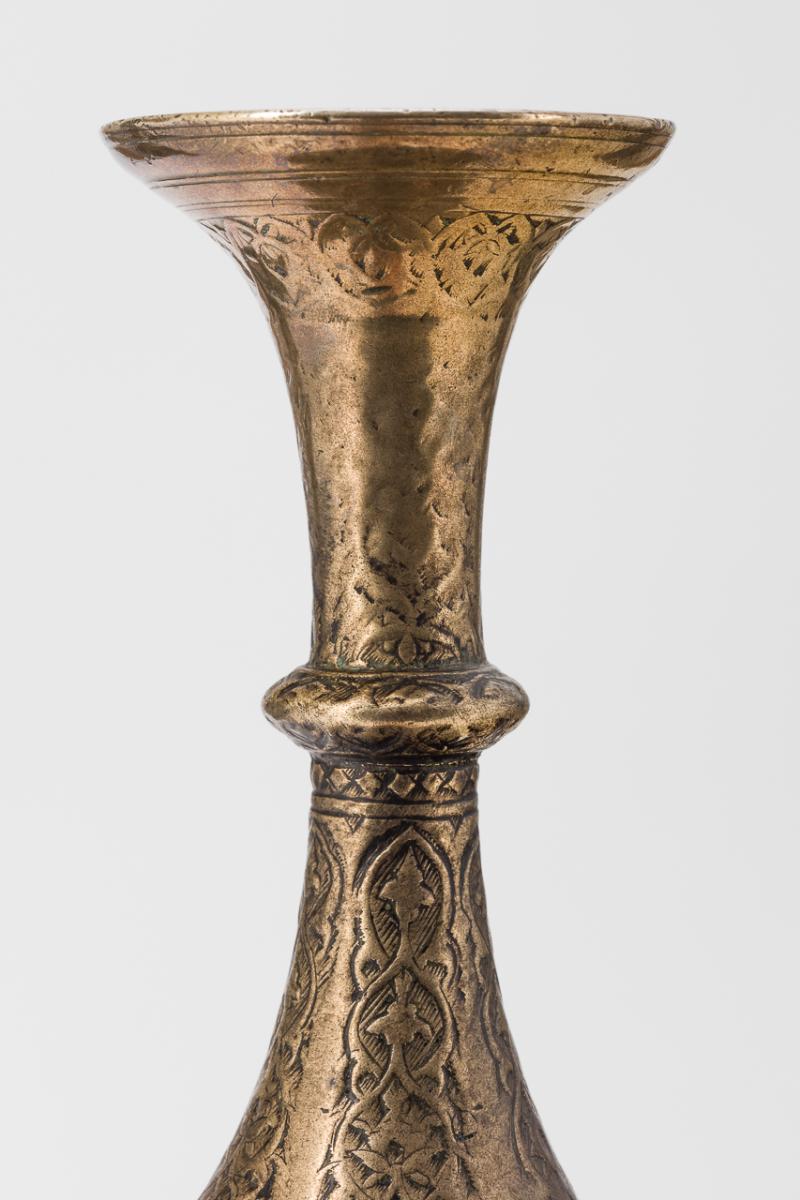
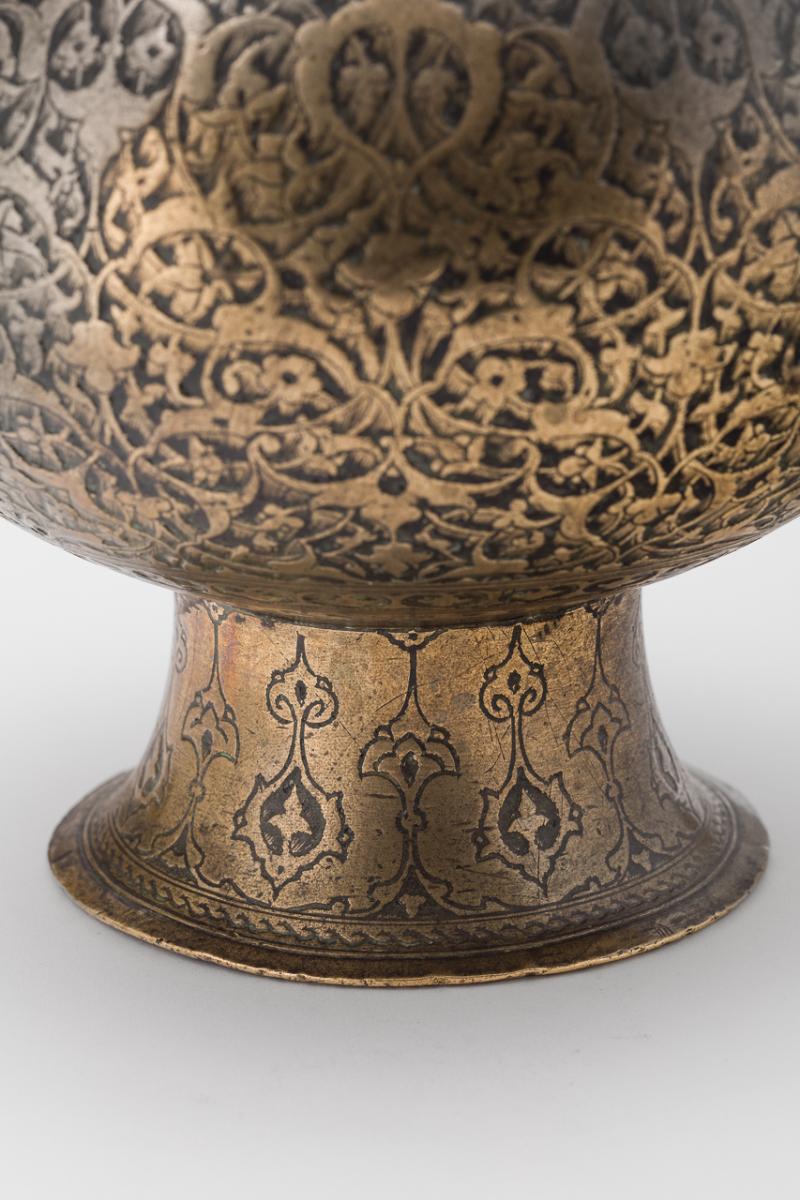
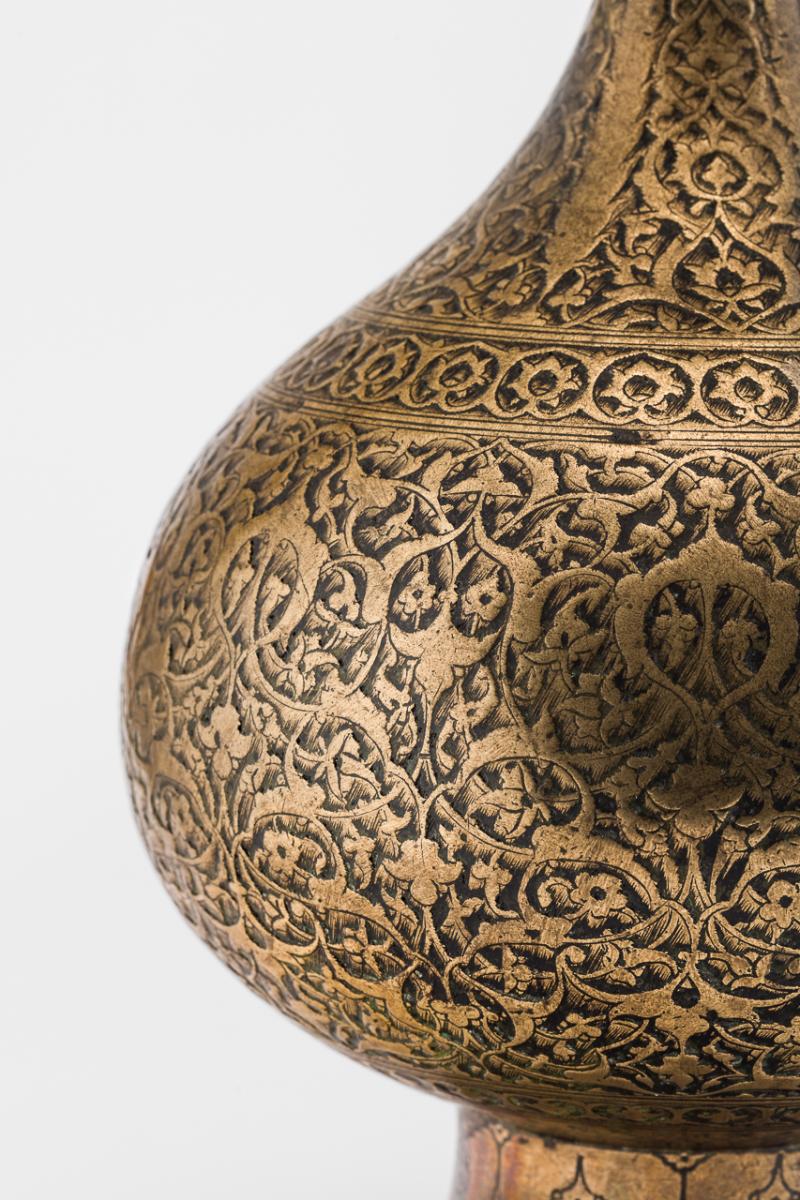
Price on application
This object is eligible for a Certificate of BADA Provenance
The BADA Standard
- Since 1918, BADA has been the leading association for the antiques and fine art trade
- Members are elected for their knowledge, integrity and quality of stock
- Our clients are protected by BADA’s code of conduct
- Our dealers’ membership is reviewed and renewed annually
- Bada.org is a non-profit site: clients deal directly with members and they pay no hidden fees
Safavid Ewer.
Safavid Persia, Late 16th to early 17th century.
Brass.
34.5cm high, 18cm maximum diameter.
Provenance: UK private collection.
This elegant ewer (āftābe) would have been used for bathing, handwashing or wudu, the Muslim practice of ritual ablutions before prayer. The ewer’s pyriform body rests upon a raised splayed foot, with a faceted spout of serpentine form, and its neck interrupted by a central bulbous ring. The body was cast in one, with the foot and spout soldered on afterwards. Areas of abrasion to the engraved decoration around the neck reveal where hands over the last 400 years have held the ewer.
The ornamentation on the body consists of interwoven vegetal arabesques, closely relating to contemporaneous illuminated manuscripts. It is inlaid with a black bituminous substance, most of which survives, to add definition. A horizontal band of lotus blossoms in ace-of-spades-shaped cartouches divides the body from the neck.1 From this band sprout cypress trees, a motif seen in Safavid lustreware. The foot is engraved with columns of palmettes, which draw the eye upwards toward the body. A rope pattern encircles the rim of the foot. The inner walls of the neck are decorated with two carefully incised lines below the edge of the neck and two further down. The spout terminates in a dragon head, a motif seen commonly in Iranian decorative arts.2 A symbol of protection, it was perhaps included to imbue the ewer’s user with its apotropaic powers.
Both the form and ornamentation of the ewer are typical of the Shah ‘Abbas period (r. 1588-1629).3 A contemporaneous ewer found in the collection of the Victoria & Albert Museum (accession no. M.111-1909) shares many stylistic similarities. Identical details include the band separating the body and the neck, and the incised lines inside both ewers.
n.b. accession nos are clickable links.
1 Melikian-Chirvani, A.S. Islamic Metalwork from the Iranian World 8-18th Centuries. London: 1982. p. 316.
2 See Metropolitan Museum of Art accession no. 91.1.607, Victoria & Albert Museum accession no. 458-1876, British Museum accession no. OA+.739.
3 Melikian-Chirvani, A.S. Op. cit. pp. 316-317.
The BADA Standard
- Since 1918, BADA has been the leading association for the antiques and fine art trade
- Members are elected for their knowledge, integrity and quality of stock
- Our clients are protected by BADA’s code of conduct
- Our dealers’ membership is reviewed and renewed annually
- Bada.org is a non-profit site: clients deal directly with members and they pay no hidden fees


